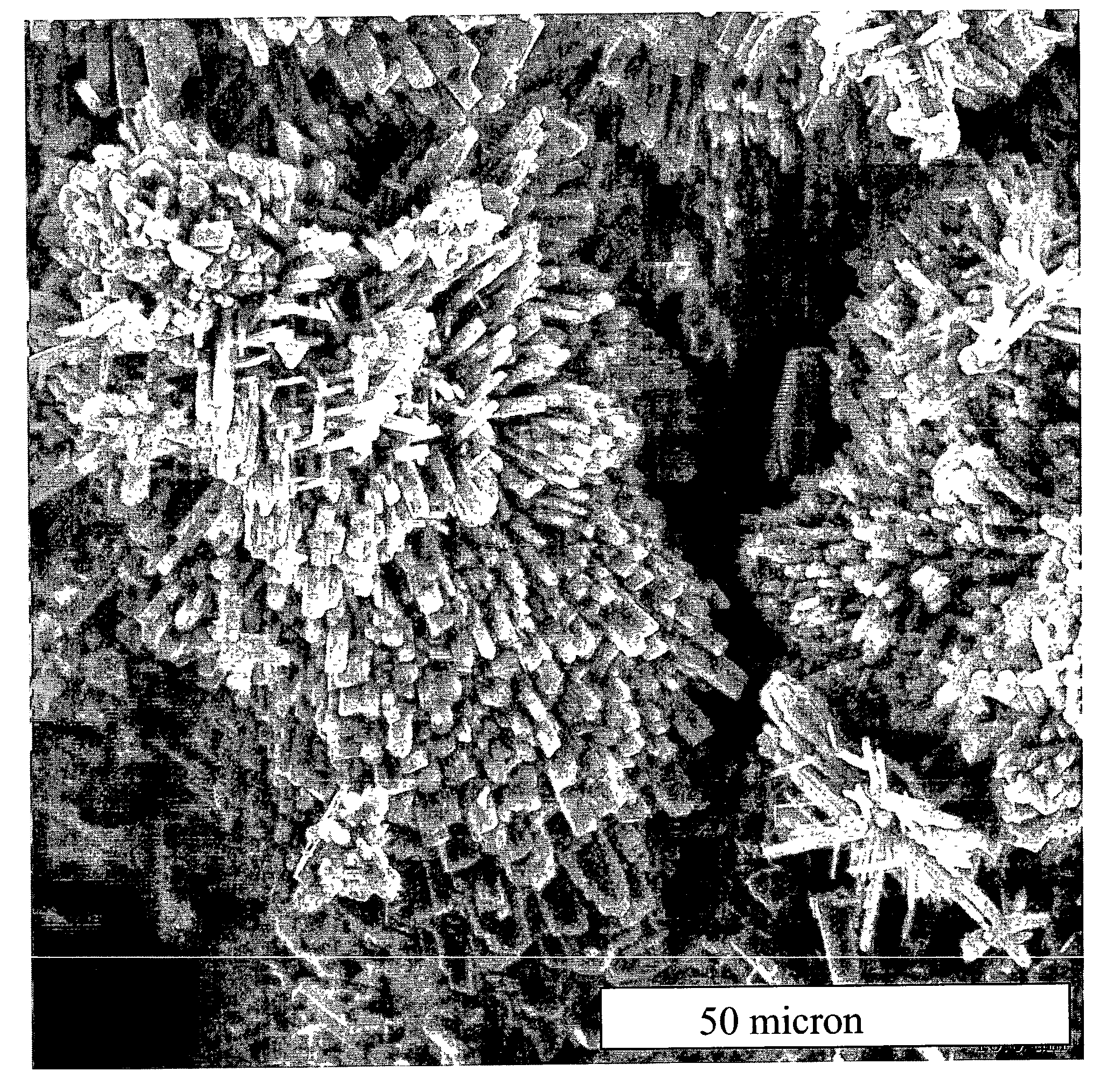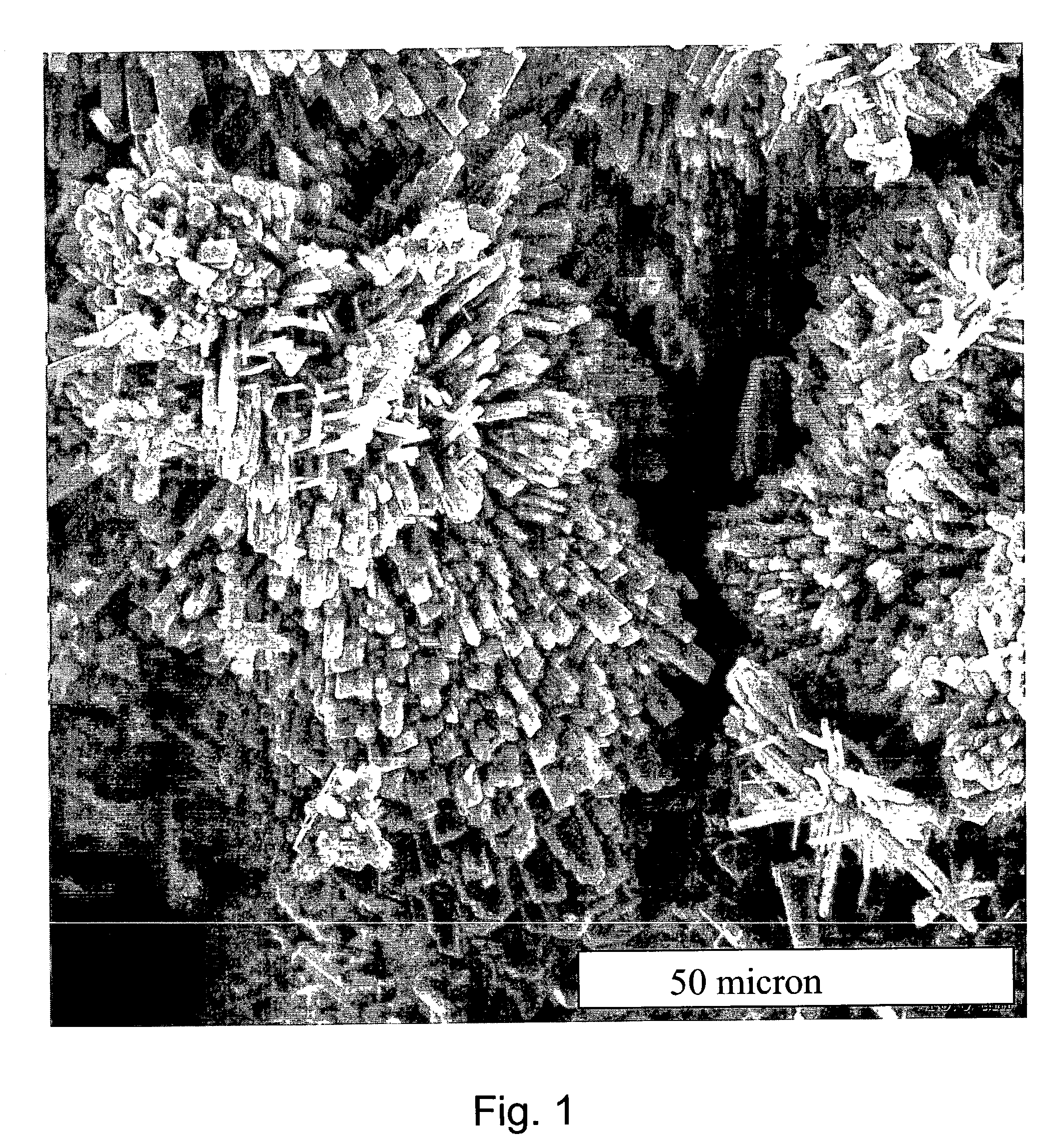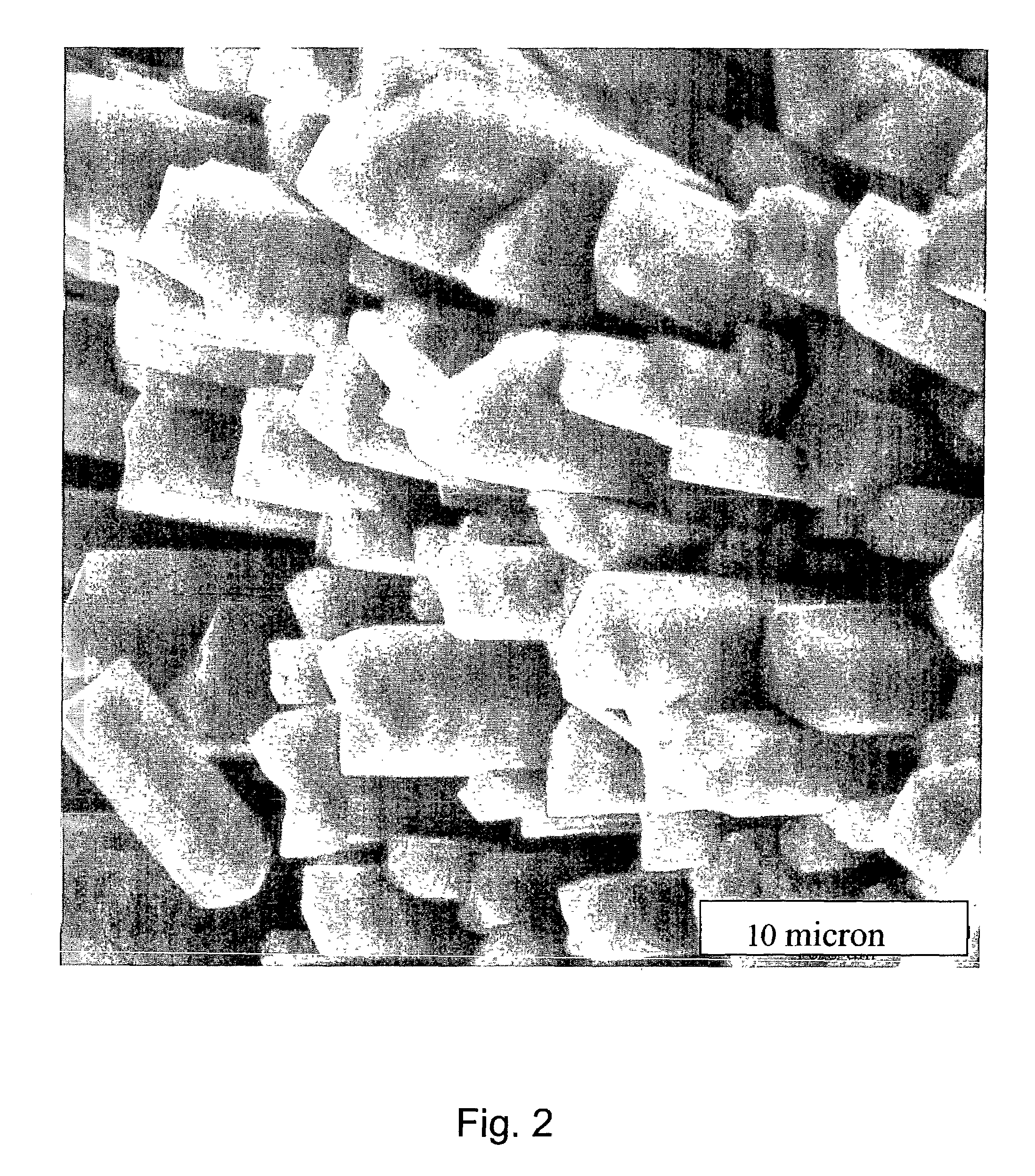Synthesis of an un-supported, high-flow ZSM-22 zeolite membrane
- Summary
- Abstract
- Description
- Claims
- Application Information
AI Technical Summary
Benefits of technology
Problems solved by technology
Method used
Image
Examples
Embodiment Construction
[0021]Un-supported, high-flow ZSM-22 membranes that consist essentially of the crystalline zeolite may be synthesized by either VPT or DGC methods. Crystal intergrowth imparts mechanical strength to the membranes, which allows them to be formed in various sizes, thickness, shapes, and non-planar curvatures. This type of membrane can be manufactured with a high porosity (“high-flow”), which permits high volumes of feedstock to be passed through the membrane without fouling or build-up of backpressure (important properties for industrial membrane processes). Furthermore, since the entire membrane consists essentially of zeolite crystals, there are essentially no impurities or additional components that could possibly contaminate or interfere with a hydrocarbon stream (such as binder phases). Also, VPT and DGC synthesis methods produce essentially no excess or wasted material, which reduce operating costs during synthesis and minimizes the generation of hazardous wastes. A ZSM-22 membr...
PUM
| Property | Measurement | Unit |
|---|---|---|
| Temperature | aaaaa | aaaaa |
| Time | aaaaa | aaaaa |
| Thickness | aaaaa | aaaaa |
Abstract
Description
Claims
Application Information
 Login to View More
Login to View More - R&D
- Intellectual Property
- Life Sciences
- Materials
- Tech Scout
- Unparalleled Data Quality
- Higher Quality Content
- 60% Fewer Hallucinations
Browse by: Latest US Patents, China's latest patents, Technical Efficacy Thesaurus, Application Domain, Technology Topic, Popular Technical Reports.
© 2025 PatSnap. All rights reserved.Legal|Privacy policy|Modern Slavery Act Transparency Statement|Sitemap|About US| Contact US: help@patsnap.com



